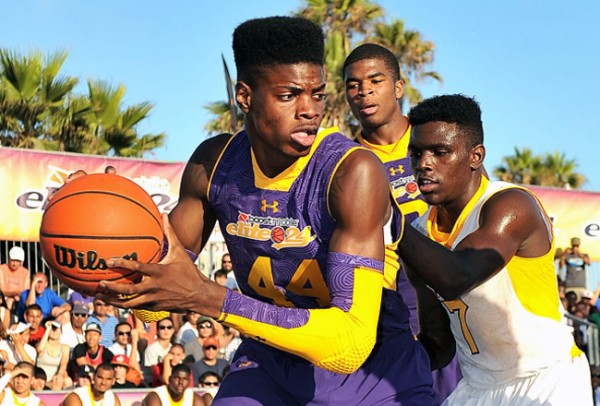Top Recruiting Classes Produce Mixed Results: An Analysis of Recent Recruiting History
Posted by EJacoby on April 13th, 2012Evan Jacoby is a regular contributor for RTC. You can find him @evanjacoby on Twitter.
On the heels of Nerlens Noel and Shabazz Muhammad’s signings as the top two high school recruits, everyone is looking forward to next season. There’s especially great hype surrounding Kentucky, UCLA, and Arizona, the prize winners of 2012’s recruiting trail. While those fan bases should certainly be excited, we decided to conduct some research as a reminder that a top incoming recruiting class doesn’t necessarily guarantee future success. The incredible success of Kentucky’s one-and-done recruiting strategy over the past couple of years (two Final Fours, one National Championship) has helped foster the idea that top recruiting classes will result in immediate hardware. But let’s not forget that winning titles with youngsters has been more of an anomaly than the norm. A review of recent history shows that top recruiting classes have resulted in failure nearly as much as sustained winning.
It takes more than one top incoming recruiting class for a program to achieve top-level success. Kentucky’s 2012 National Championship will be synonymous with the “one-and-done” strategy, but it wasn’t like the Wildcats employed all freshmen to win the title. Of their top six players, three were freshmen. Sure, Anthony Davis and Michael Kidd-Gilchrist were their best two players, and Marquis Teague was crucial as well, but UK would not have won the championship based on that recruiting class alone. Doron Lamb, Terrence Jones, and Darius Miller were massive contributors as well, meaning that the team’s success was a culmination of several years of top recruits, not just one haul that came in and won it all. This is the thesis that is established when reviewing recent history.
Let’s take a look at the past 10 years of recruiting history, analyzing a team’s success after it brings in a top-three recruiting class. We get our recruiting class rankings from Rivals.com. In 2003, it was Florida State, Oklahoma, and Maryland that took in the top high school recruits. The result? Just one of these three teams qualified for the NCAA Tournament the following season, with Maryland advancing to the round of 32. The Terrapins’ four years after this top class resulted in just two NCAA Tournaments and zero Sweet Sixteens. Oklahoma also qualified for just two NCAA Tourneys in four years with one postseason win. And Florida State, the owners of the top recruiting class of 2003, did not qualify for a single NCAA Tournament in the following four seasons.










































